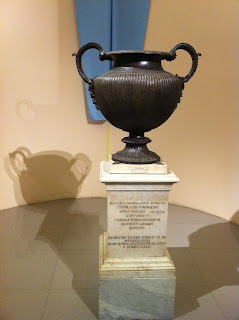Friday, October 28, 2011 -  Alain Lacoursière,Canada,jean-francois talbot,Quebec Art Crime team
Alain Lacoursière,Canada,jean-francois talbot,Quebec Art Crime team
 No comments
No comments
 Alain Lacoursière,Canada,jean-francois talbot,Quebec Art Crime team
Alain Lacoursière,Canada,jean-francois talbot,Quebec Art Crime team
 No comments
No comments
Sûreté du Québec Police's Art Crime Enforcement Unit reports three paintings by Marc-Auréle Fortin and one painting by Rolland Montpetit have been stolen
 |
| Painting by Fortin reported stolen |
by Catherine Schofield Sezgin,
ARCA Blog Editor-in-Chief
Sûreté du Québec Police's Art Crime Enforcement Unit used it's internationally distributed Art Alert email program to notify the art world and law enforcement that four paintings have been stolen. The Art Alert system, designed by retired officer Alain Lacoursière and the current head of the team, Jean-François Talbot, sends out an image of the artwork and known details such as the name of the artist; title of the work; year created; medium; dimension; and any other known details.
Interested parties may subscribe at art.alerte@surete.qu.ca.
The ARCA blog has previously covered the activities of Canada's only art crime enforcement team here.
 |
| Painting by Marc-Aurèle Fortin reported stolen |
Quebec landscape painter Marc-Aurele Fortin produced three of the paintings. Fortin (1888-1970), beset by diabetes, stopped most of his painting in 1955 and entrusted thousands of works to his manager yet many of his paintings are thought to have been lost. Fortin's artworks can be seen in the Musée des beaux arts Montréal (Montreal Museum of Fine Arts) and at the National Gallery of Canada.
 |
| Painting by Rolland Montpetit reported stolen |
Rolland Montpetit (Canadian, born 1913) produced the fourth painting reported stolen today on Art Alert.
The police do not release any other information about the paintings on Art Alert.
If you are interested in reading about Canada's largest art theft, you may find more information here.
Update: A fifth email from Art Alert reports that another painting, one by Pfeiffer, was stolen at the same time.
Update: A fifth email from Art Alert reports that another painting, one by Pfeiffer, was stolen at the same time.
 |
| Painting by Pfeiffer also reported stolen |

















